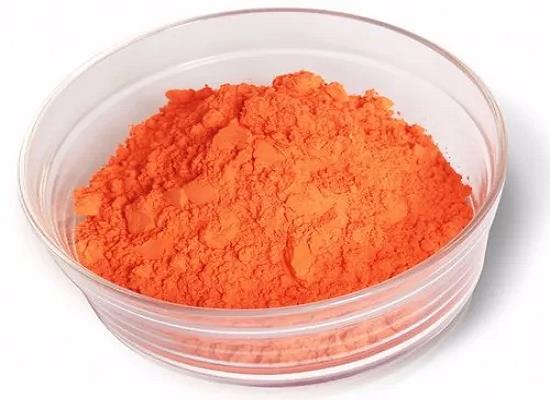Understanding the Properties, Pharmacokinetics, and Safety Hazards of Tolylene-2,4-diisocyanate
Jan 4,2024
General Description
Tolylene-2,4-diisocyanate is a commercially produced chemical compound that exists as a clear, pale yellow liquid with a pungent odor. It is insoluble in water but miscible with most organic solvents. The compound is sensitive and should be stored under refrigeration, away from light and moisture. It is toxic, carcinogenic, and poses safety hazards to human health and the environment. Inhalation, ingestion, or skin contact with this compound can lead to severe injuries and chronic lung diseases. Additionally, it reacts with water or moist air, releasing toxic gases. Strict adherence to safety protocols and regulations is necessary when working with Tolylene-2,4-diisocyanate.

Figure 1. Tolylene-2,4-diisocyanate
Properties and Characteristics
Tolylene-2,4-diisocyanate, a key chemical compound, is produced commercially as a mixture of two isomeric forms, 2,4-toluene diisocyanate and 2,6-toluene diisocyanate. It exists as a clear, pale yellow liquid at room temperature, emitting a sharp, pungent odor. This compound should be stored under refrigeration in a tightly closed container, away from light and moisture, and under an inert atmosphere due to its sensitivity. Tolylene-2,4-diisocyanate is insoluble in water but miscible with most common organic solvents. It appears as a colorless to yellow or dark liquid or solid with a sweet, fruity, pungent odor and has a melting point of 68 °F (20 °C). In the presence of moisture, it evolves carbon dioxide, potentially leading to over-pressurization in enclosed spaces. Furthermore, it is important to note that tolylene-2,4-diisocyanate is toxic and carcinogenic, requiring careful handling and storage to prevent exposure. These properties highlight the need for strict adherence to safety protocols and regulations when working with this compound. 1
Pharmacokinetics
Tolylene-2,4-diisocyanate is a chemical compound with various routes of exposure, including oral and inhalation. The pharmacokinetics of Tolylene-2,4-diisocyanate were investigated in Fischer 344 rats using radiolabeled Tolylene-2,4-diisocyanate. After oral administration of Tolylene-2,4-diisocyanate, 81% of the radioactivity was found in feces, 8% in urine, and 4% in tissues/carcass/gastrointestinal tract contents. In contrast, inhalation exposure to Tolylene-2,4-diisocyanate resulted in 47% of the radioactivity in feces, 15% in urine, and 34% in tissues/carcass/gastrointestinal tract contents. The hydrolysis product of Tolylene-2,4-diisocyanate, toluene-2,4-diamine (TDA), showed a similar distribution of radioactivity in all cases. Comparing the inhalation group with the oral Tolylene-2,4-diisocyanate and TDA treatment groups, a larger percentage of inhaled radioactivity was found in tissues/carcass, and excretion of radioactivity into urine was slower following Tolylene-2,4-diisocyanate inhalation. Acid labile conjugates accounted for a significant portion of the quantitated urinary metabolites following both inhalation and oral exposure to Tolylene-2,4-diisocyanate, while only a smaller percentage was conjugated following oral TDA administration. These findings suggest that the disposition of inhaled Tolylene-2,4-diisocyanate differs from orally administered Tolylene-2,4-diisocyanate or TDA. Further comprehensive data on Absorption, Distribution, and Excretion can be found in the Hazardous Substances Data Bank (HSDB) record page for Tolylene-2,4-diisocyanate. 2
Safety Hazards
Tolylene-2,4-diisocyanate poses significant safety hazards to human health and the environment. It has the potential to cause severe injury, burns, or even death through inhalation, ingestion, or skin and eye contact with its vapors, dusts, or the substance itself. Tolylene-2,4-diisocyanate is highly corrosive to the eyes and can lead to keratitis and conjunctivitis if splashed into the eyes. Chronic exposure to Tolylene-2,4-diisocyanate may result in chronic lung disease, including a loss of respiratory function and the development of asthmatic bronchitis or asthma. Additionally, Tolylene-2,4-diisocyanate is a powerful irritant to the respiratory tract when in vapor form. Furthermore, Tolylene-2,4-diisocyanate can cause inflammation of the skin, chemical pneumonitis, and pulmonary edema. It should be noted that Tolylene-2,4-diisocyanate reacts with water or moist air, releasing toxic, corrosive, or flammable gases. In the event of a fire, Tolylene-2,4-diisocyanate can produce irritating, corrosive, and/or toxic gases. Runoff from fire control or dilution water can also be corrosive, toxic, and environmentally hazardous. These safety risks associated with Tolylene-2,4-diisocyanate have been identified by various sources, including the U.S. Environmental Protection Agency (EPA) and the CAMEO Chemicals database. Proper precautions and safety measures must be taken to minimize the potential dangers posed by Tolylene-2,4-diisocyanate. 3
Reference
1. 2,4-Diisocyanato-1-methylbenzene. National Center for Biotechnology Information, 2023, PubChem Compound Summary for CID 11443.
2. PubChem Annotation Record for 2,4-TOLUENE DIISOCYANATE. National Center for Biotechnology Information, 2023, Source: Hazardous Substances Data Bank (HSDB).
3. TOLUENE-2,4-DIISOCYANATE. CAMEO Chemicals, 1613.
- Related articles
- Related Qustion
- Tolylene-2,4-diisocyanate: Dermal Exposure and carcinogenicity Jan 15, 2025
Limited data on Tolylene-2,4-diisocyanate complicates dermal exposure assessment. Respiratory effects and carcinogenicity risks are evident, but uncertainties persist.
- Exploring the applications and toxicology of tolylene-2,4-diisocyanate Jul 24, 2023
Tolylene-2,4-diisocyanate used in gelatin membranes, potentiometric sensors, superhydrophobic coatings, but highly toxic and requires careful handling.
- Toluene diisocyanate-Health Hazards and Toxicity Sep 10, 2019
The acute toxicity of toluene diisocyanate by inhalation is high. Exposure to TDI can cause lung damage and decreased breathing capacity. Symptoms of exposure may include coughing, tightness of the chest, chest pain, nausea, vomiting.
Supplementation with pyridoxal 5'-phosphate monohydrate can synthesize neurotransmitters such as dopamine and serotonin, maintaining a healthy nervous system.....
Nov 4,2025Biochemical Engineering4-Hydroxy-2,2,6,6-tetramethyl-piperidinooxy is a radical scavenger with therapeutic potential in preventing radiation-induced alopecia, but caution is needed due to possible side effects.....
Jan 4,2024APITolylene-2,4-diisocyanate
584-84-9You may like
Tolylene-2,4-diisocyanate manufacturers
- Tolylene-2,4-diisocyanate
-

- $500.00 / 250kg
- 2024-11-07
- CAS:584-84-9
- Min. Order: 1kg
- Purity: 99.9%
- Supply Ability: 200000
- TDI 2,4-Diisocyanatotoluene
-

- $0.00 / 25KG
- 2023-04-28
- CAS:584-84-9
- Min. Order: 1KG
- Purity: 99.5%
- Supply Ability: 100000
- Tolylene-2,4-diisocyanate
-

- $48.00 / 1KG
- 2021-08-12
- CAS:584-84-9
- Min. Order: 1g
- Purity: 99.9%
- Supply Ability: 500000kgs






